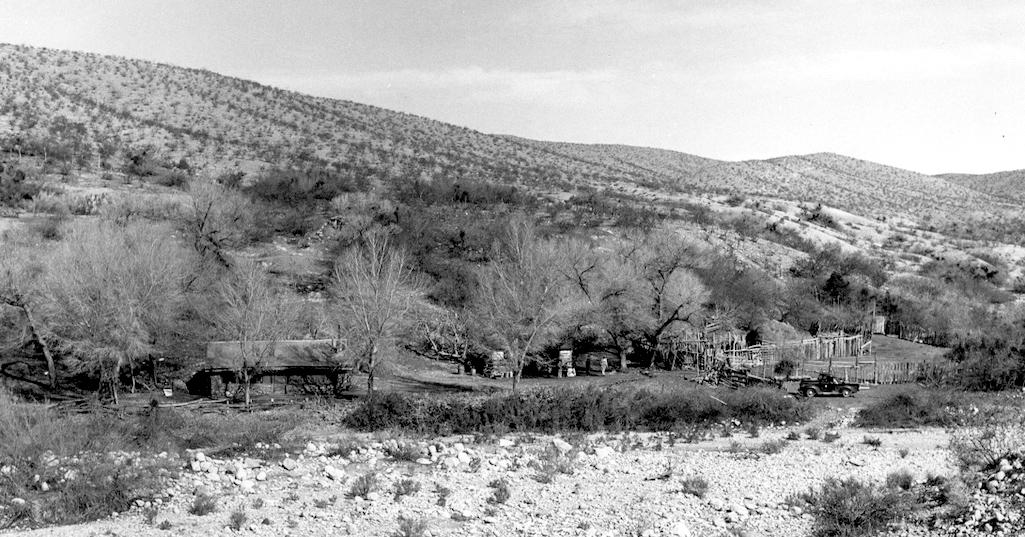
Once young, these cottonwood trees at the Tassi Ranch seen in 1947 recently were cut down because of the hazard they presented/NPS file
Aging cottonwood trees that were turning into a hazard around the Tassi Ranch buildings in Grand Canyon-Parashant National Monument in Arizona have been removed.
The cottonwood, many of which were 80+ years old, had become a safety hazard. After a thorough review, the National Park Service determined that removal of the trees was necessary to ensure visitor safety and to protect the historic ranch.
Cottonwoods may spontaneously drop large branches throughout their 40-125 year lifespan, and can fall over without warning as they age. Falling branches pose a safety risk to the public and could cause catastrophic damage to fragile historic structures.
Cottonwood saplings now will be planted in front of the ranch house and replaced as needed in the future. The goal is to preserve both the historic ranch and its row of cottonwood trees, just as it once was during the late 1930s and 1940s.
“The buildings at Tassi Ranch are some of the best examples of early 20th century historic structures on the monument,” said Grand Canyon-Parashant Superintendent Brenda Todd. “We look forward to watching the new cottonwoods grow quickly and once again provide shade to visitors as they explore the ranch. Tassi is a peaceful place to stop for a moment and ponder how people once made a living in this extreme environment.”
Grand Canyon-Parashant National Monument is remote and lacks cell service. Roads are unpaved and rough. A 4x4 vehicle equipped with tires designed for rocky and sandy terrain, a map, and adequate supplies are all critical to a safer visit.
From the Traveler archives: On The Bucket List: Parashant National Monument

 Support Essential Coverage of Essential Places
Support Essential Coverage of Essential Places






